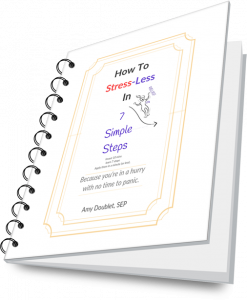Fighting is a normal defense response to a threat.
Usually, it is automatic and you are not thinking rationally but reacting instinctually to potential danger.
Behavior is either learned or instinctual.
And the fighting I’m talking about is instinctive.
Automatic…
…Not cognitive.
AND it’s good!
A must physiologically, for us to react from these primal places because these are life-saving biological responses.
However, they are meant to be time-limited.
The 3 instinctive survival responses to threat are:
- fight
- flight
- freeze
They are all defensive (or self-protective). Today we’re talking specifically about the fight response.
Cognitive therapies are limited in how they can help modulate our primal instinctive behaviors because the language the reptilian brain speaks is not a cognitive one.
The degree of threat is usually matched with an appropriate response.
You spent the day hunting and someone tries to grab your only supply of food for the month – you lunge to punch them in the face. Rightfully so…
Problem solved. Yeah, No!
Please don’t do that…
…As much as you want to.
You’re probably fuming, your heart rate has increased and your body is releasing adrenaline and if you are angry long enough cortisol releases to get you ready to FIGHT. (it’s also a physiological response for alertness and one that you might experience at the gym pumping weights, not the state I’m referring to here).
Back to that food, you need to eat. You worked for that grub. So, blood is migrating to your muscles and your eyes narrow with a “look that could kill”.
The impulse to pummel his/her face gets stronger. You get up to take action when…
Suddenly something changes…
You stop dead in your tracks because a realization set in, the bully is bigger or stronger. You can’t protect yourself or your prized possession.
Unable to meet the situation with aggression it’s common to feel powerlessness.
You may freeze like a “deer in headlights”, or head for the hills, run leaving the problem behind you. No shame in flight, after all, this is about survival and you SUCCEEDED!
The truth is we can’t outrun our problems.
We’re no longer cavemen. (ahem, women)
Unfortunately, because the protective response was thwarted you still have tension in your muscles that simply can’t “relax” no matter how many messages you get.
Reality check, you don’t have to hunt and you don’t need to preserve a months worth of food.
Just for clarity…
There is nothing wrong with feeling angry.
Anger serves a purpose and it’s healthy to feel. (At the right time anger can be a life-saving).
We want to turn the impulse of punching into healthy aggression and a sense of vitality. It comes from having clear boundaries and containment. Also allowing the built-up tension to have the much-needed resolution for a healthy mind/body.
The fight response is meant to be time-limited to get us out of danger.
If your nervous system is”stuck” in a fight response you might:
- Not feel Safe
- When you feel angry the emotion goes from 0-60. FAST
- Not be able to settle
- Have neck/shoulder tension, tight TMJ/Jaw or grind your teeth
- Anxious – Panic Attacks
- Have high cortisol levels
- Have high blood pressure
Do you internalize your anger (like most of us in the world)? Totally normal, most of us have been socialized to “be nice” or we inherently want to be liked so we stuff what is considered “bad manners” or feelings.
It’s learned behavior.
Good News…
.…it can be unlearned!
I’m not talking about being rude suddenly or punching people in the face!! Part of it is learning to have clear and solid boundaries….which we’ll get to. For now, let’s process some anger via the body brain’s brilliance.
Try this simple exercise to process anger – gently now:
Anger to Healthy Aggression Process – 7 Super Simple Steps:
- Make fists with your hands.
- Tighten them, really really really tight…
- Now Tighter!!! TIGHTER
- Gently release the grip
- Uncurl your fingers ***SLOWLY***
- Very very slowly open your hands up completely extending your fingers
- Relax your hands completely
What do you sense? In your body? Notice any sensations anywhere?
What is different? The same? Take a couple minutes to notice overall what happened inside.
Repeat once more.
For greater detail in self-tracking. Download my free e-book and follow the process outlined for greater self-awareness, a sense of safety and the ability to settle. It’s a start in working with your nervous system on your own.
Tip: To better track your experiences and recall or reflect:
Journal
(even in short bullet points) it’s helpful to recall certain things later or to see how things change over time. The exercises are all meant to be gentle and increase changes over time. They are not cathartic. If you use them they will create change over time!
